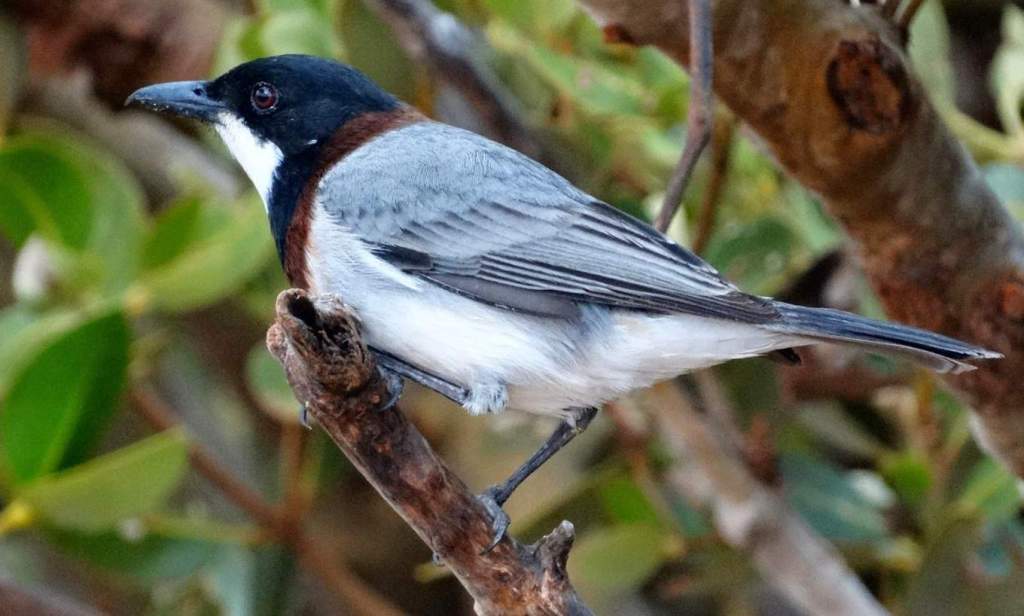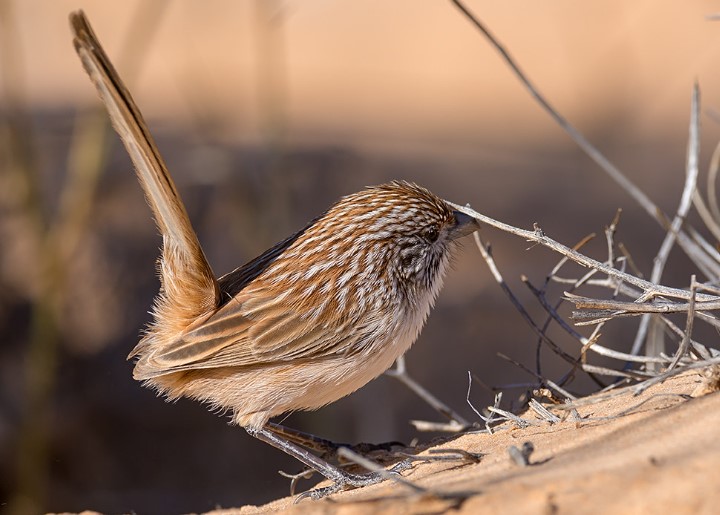Family: The white-breasted Whistler (Pachycephala lanioides) belongs to the family Pachycephalidae in the order Passeriformes.
Habitat: The White-breasted Whistler is an imposing whistler and one of the largest and most strikingly patterned of its genus Pachycephala. An unprepossessing habitat is frequented by the White-breasted. This species isn’t restricted to northeastern Australian mangroves alone. It also prefers the stunted branches along inlets and estuaries, where the stems are thick and the canopy is only three to five meters high. It appears to be sedentary, established pairs with territories spanning 50 to several hundred meters.
Feeding: Undergrowth in the mangroves is a quiet, solitarily feeding place for White-breasted Whistlers. As they move from shrub to shrub, they hop and pause among the branchlets and sheltered foliage as they look for insects, making short, undulating flights under cover or between branches. When the tides are low, they hop about the mud looking for crustaceans, such as tiny crabs, which form a major part of their diet. It is common for their bills-which are particularly well-suited for this type of feeding-and tails and feet to be muddy from this type of feeding.
Races: There are three races of this endemic species: one small, with fawn females on the Pilbara coast; one large with fawn-grey females in the Kimberleys; and the last smaller with grey females around Arnhem Land.

Identification: MALE: Head and sides of face are black; indistinct chestnut collar around the nape. Back and rump mid-grey, rarely mottled black; upper tail coverts black. Wings with coverts and flight feathers are black-edged mid-grey. Tail black above with grey tip, grey below. Throat white; a broad black band from side off ace around breast edged chestnut below; rest of undersurface white merging to pale grey on flanks; thighs black. Eyes ruby. Bills black. Feet are black or brown-grey.
FEMALE: Upper parts and face are uniformly mid-grey to fawn. Wing coverts and flight feathers are dusky grey with pale edges. Tail grey to black edged with grey. Throat off-white and breast-washed grey to fawn, all moderately streaked with black-brown extending over flanks; belly light buff to white; vent white; thighs grey or grey-brown. Eyes, bill, and feet as male.
IMMATURES: Similar to female but back lighter, with streaking more conspicuous, particularly on pale cinnamon-tinged underparts; flight feathers and coverts edged cinnamon to light rufous. Eyes are dull brown, and the bill is light brown with a yellow gape.
Vocalizations: White-breasted Whistlers sing sporadically throughout the year to defend their territory. Their song is like that of the Rufous Whistler but, surprisingly for such a large bird, lacks the same verve and volume. Males usually sing from a low vantage point within mangrove shrubbery and can rarely be heard for more than 50 meters. Contact calls by the white-breasted Whistler are whistled notes in two or three syllables rising in inflection. Harst alarm whistles are also whistled twit, with the second syllable louder. SONG: The male gives a sequence of four to six clear whistled notes, more subdued than Rufous Whistler’s; the female’s song is still less animated.
Nest & Breed: The birds breed in the drier months of the year, perhaps because staple food crustaceans are more plentiful than when unaffected by freshwater run-off during the summer monsoon. Females may carry out most of the nest-building and feeding of young while the male patrols the territory. Nesting and breeding occur between March and November; possibly sporadically throughout the year. Nests in a small cup of interwoven rootlets and twigs, lined with fine rootlets; usually in a fork in dense mangroves 1-3 meters above the mud.
Eggs & Incubation: The birds lay one or two eggs; smooth, glossy buff-olive, spotted with umber and olive-brown, usually darker in the zone at the larger end; oval, about 26 x 19 mm. Incubation responsibilities are usually carried out by females.
Alternative Names: The bird is also known as the White-bellied Whistler and White-bellied Thickhead.
Size: White-breasted Whistlers measure about 180-200 mm long.
Distribution: It is locally common along the coast in low dense mangroves usually on the seaward side, rarely in adjacent monsoon scrub; from Shark Bay, WA, east to Karumba, Qld.
Read More – Grey Whistler – A Musical Bird That Haunts Hearts







